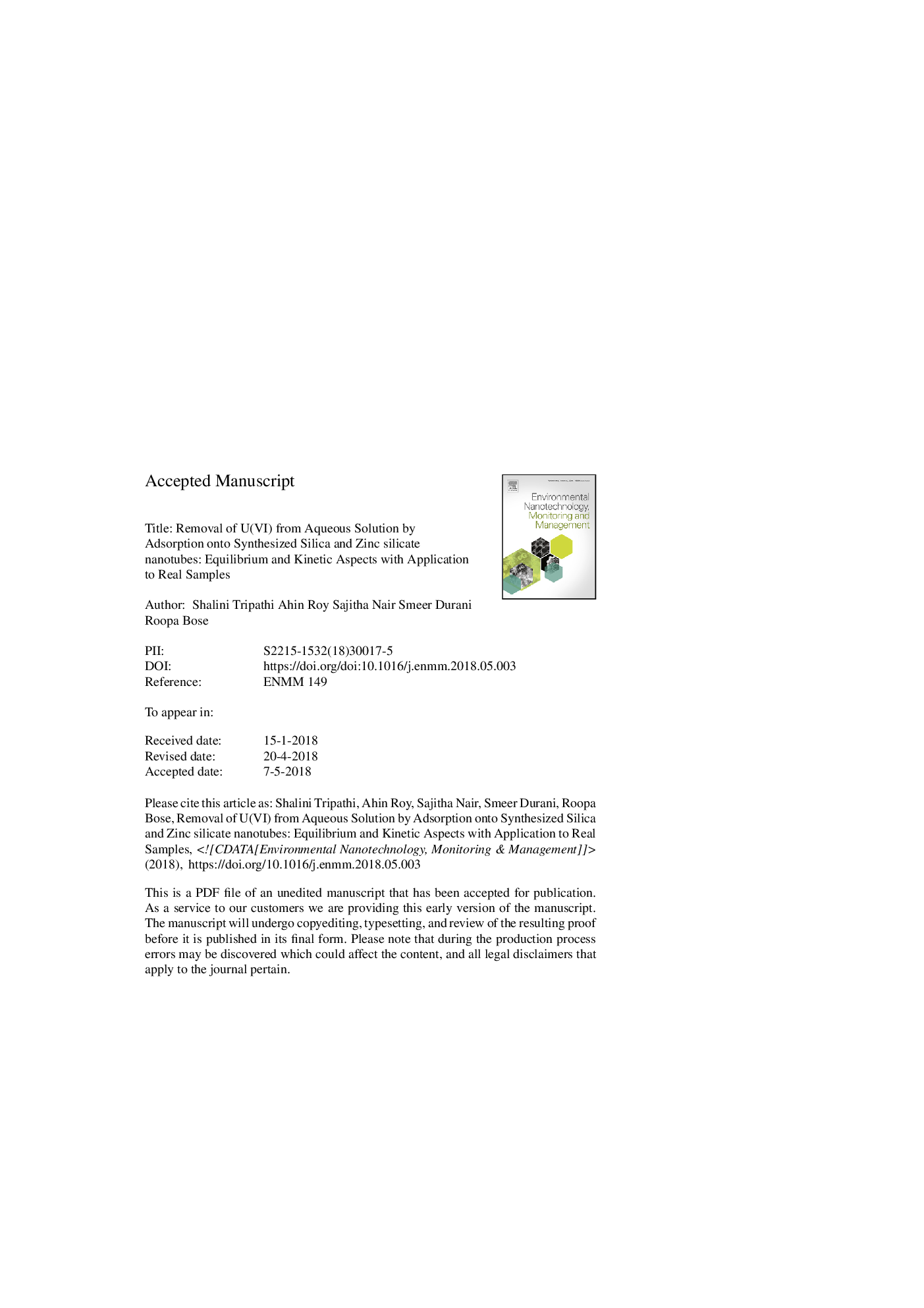| Article ID | Journal | Published Year | Pages | File Type |
|---|---|---|---|---|
| 8855599 | Environmental Nanotechnology, Monitoring & Management | 2018 | 42 Pages |
Abstract
Adsorption is an emerging technique in terms of both uranium removal and pre-concentration. This paper presents the feasibility of adsorption of uranium(VI) from aqueous solutions using hollow amorphous SiO2 nanotubes (SNTs) and crystalline Zn2SiO4 nanotubes (ZnSNTs), synthesised by scalable wet-chemical technique. With quantitative spectroscopy based techniques, we explore various parameters affecting the U(VI) adsorption. Detailed exploration of the kinetics shows that the process follows a Langmuir adsorption process, with a second order kinetics. Furthermore, adsorption isotherm yields a remarkably high uranium adsorption capacity (250â¯mg/g and 143â¯mg/g) of SNTs and ZnSNTs respectively, paving a way for their large scale application. The adsorbents remained selective wards the radionuclide even in aqueous matrices like sea water and mine affluent samples - thus highlighting the practical applicability of the method. On an extended note, we show that the adsorbents can be regenerated in a post-adsorption process, opening a tantalising possibility of recycling and reuse.
Related Topics
Life Sciences
Environmental Science
Environmental Chemistry
Authors
Shalini Tripathi, Ahin Roy, Sajitha Nair, Smeer Durani, Roopa Bose,
